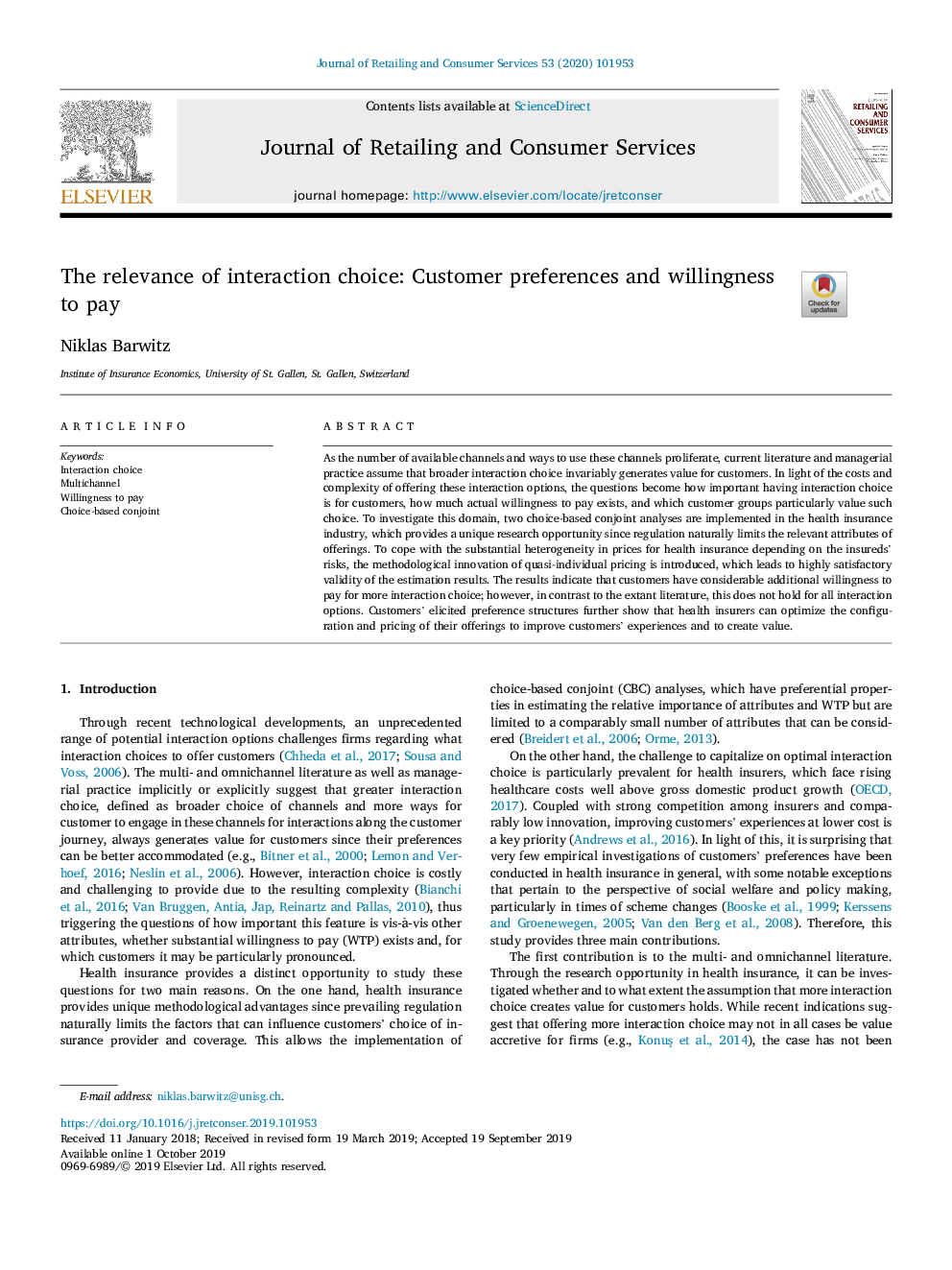| Article ID | Journal | Published Year | Pages | File Type |
|---|---|---|---|---|
| 13464376 | Journal of Retailing and Consumer Services | 2020 | 19 Pages |
Abstract
As the number of available channels and ways to use these channels proliferate, current literature and managerial practice assume that broader interaction choice invariably generates value for customers. In light of the costs and complexity of offering these interaction options, the questions become how important having interaction choice is for customers, how much actual willingness to pay exists, and which customer groups particularly value such choice. To investigate this domain, two choice-based conjoint analyses are implemented in the health insurance industry, which provides a unique research opportunity since regulation naturally limits the relevant attributes of offerings. To cope with the substantial heterogeneity in prices for health insurance depending on the insureds' risks, the methodological innovation of quasi-individual pricing is introduced, which leads to highly satisfactory validity of the estimation results. The results indicate that customers have considerable additional willingness to pay for more interaction choice; however, in contrast to the extant literature, this does not hold for all interaction options. Customers' elicited preference structures further show that health insurers can optimize the configuration and pricing of their offerings to improve customers' experiences and to create value.
Related Topics
Social Sciences and Humanities
Business, Management and Accounting
Marketing
Authors
Niklas Barwitz,
